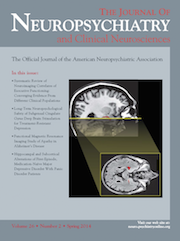Dissociative possession states —illness or cultural?
Possession states manifest in various different ways depending on the local culture and beliefs. Bourguignon et al
2 found that 90% of a worldwide sample of 488 societies displayed trance and/or possession— it appears that this phenomenon, although not very well documented in the literature, is in fact common.
Singapore is a multiracial country. According to the 2012 national population census,
3 Chinese form the majority at 74%, followed by the Malays with 13%, and the Indians with 9.2%. All three of these dominant ethnic groups have deeply rooted spiritual beliefs. The Chinese believe that there are two types of spirits and ghosts—one that looks after the welfare of the living and those that do harm if not appeased. Spirit mediums are revered and thought of as gifted individuals who have the special ability to communicate with spiritual beings. The Malays too encounter trance states—
main petri (Kelantanese healing ceremony),
ilmu pencak silat (malay martial arts), and
kuda kepang (horse possessions) are some examples. Thaipussam is a major religious festival for the Hindus that involve fire-walking and carrying
kavadi. Worshippers are usually in a trance state.
In a local study of possession-trance states,
4 what was notable was that there were significant similarities in phenomenology across the different races despite markedly different cultural backgrounds. The study also noted that stiffening of limbs and jerking occurred most commonly and possession-trance states appeared to be precipitated by fear/anxiety.
At present, according to the DSM-IV TR,
5 dissociative trance disorder comes under Dissociative Disorders Not Otherwise Specified. There are differences in phenomenology between a trance and a possession state. The latter involves the replacement of personal identity with a new identity, which is attributed to a ‘spirit, power, deity, or another person.’ Possession states are commonly more elaborate.
In regions of the world where brief dissociative states in culturally and religiously sanctioned contexts occur frequently in the absence of other psychiatric illnesses, it gives rise to diagnostic conflict. When do we call it a mental illness? Griffith and Ruiz
6 suggested that possession becomes abnormal when: 1) it lasts too long; 2) there is no perceivable stimulus or condition; and 3) it has a negative orientation.
Moving forward, DSM V has proposed that trance and possession trance be treated as separate entities and possession trance to be subsumed as a dissociative identity disorder (DID).
7 The reasons for this move have been discussed—possession trance and trance states are phenomenologically different and should not be lumped together; possession trance states are phenomenologically similar to DID, and it is probably a cultural variant; emerging link between trauma and possession trance and because of its cultural bias it is currently being under-diagnosed and under-treated.
7Dissociative states and epilepsy
Dissociative disorders and epilepsy share many clinical features including amnesia, fugue, depersonalization, derealization, and identity change making it a diagnostic challenge. Studies of patients with epilepsy and dissociative states show that organic fugue states are also common. When postictal personality changes occur, they are usually time limited and not complex.
Dissociative symptoms can be misdiagnosed as epilepsy in the absence of an ictal EEG; conversely epilepsy can be misdiagnosed as a dissociative disorder if there is a normal non-ictal EEG. Patients with temporal lobe epilepsy may present with psychiatric symptoms and have nonspecific EEG changes. Even those patients with overt clinical manifestations of a seizure disorder may have a normal EEG. In patients with dissociative disorders, abnormal EEG’s are seen in 30%‒44%, and comorbid epilepsy is seen in 10%.
8 This is higher than the general population, however, there is no definite etiological link making an increased awareness among neurologists essential.
A clearer diagnosis of epilepsy versus dissociation can be made using video-EEG monitoring, which should be normal in dissociative states not related to seizure activity. This is, however, labor intensive, expensive, and not without false positives/negatives.
Both cases had similar presenting features albeit somewhat more complex phenomenology in Y’s case echoing what is already known in the local literature. They both had deeply rooted religious beliefs predating the onset of dissociative states and rigorous investigations were negative. What enabled us to ascertaining diagnoses and care planning was a clear history that was taken with an understanding of culturally sanctioned behavior.

